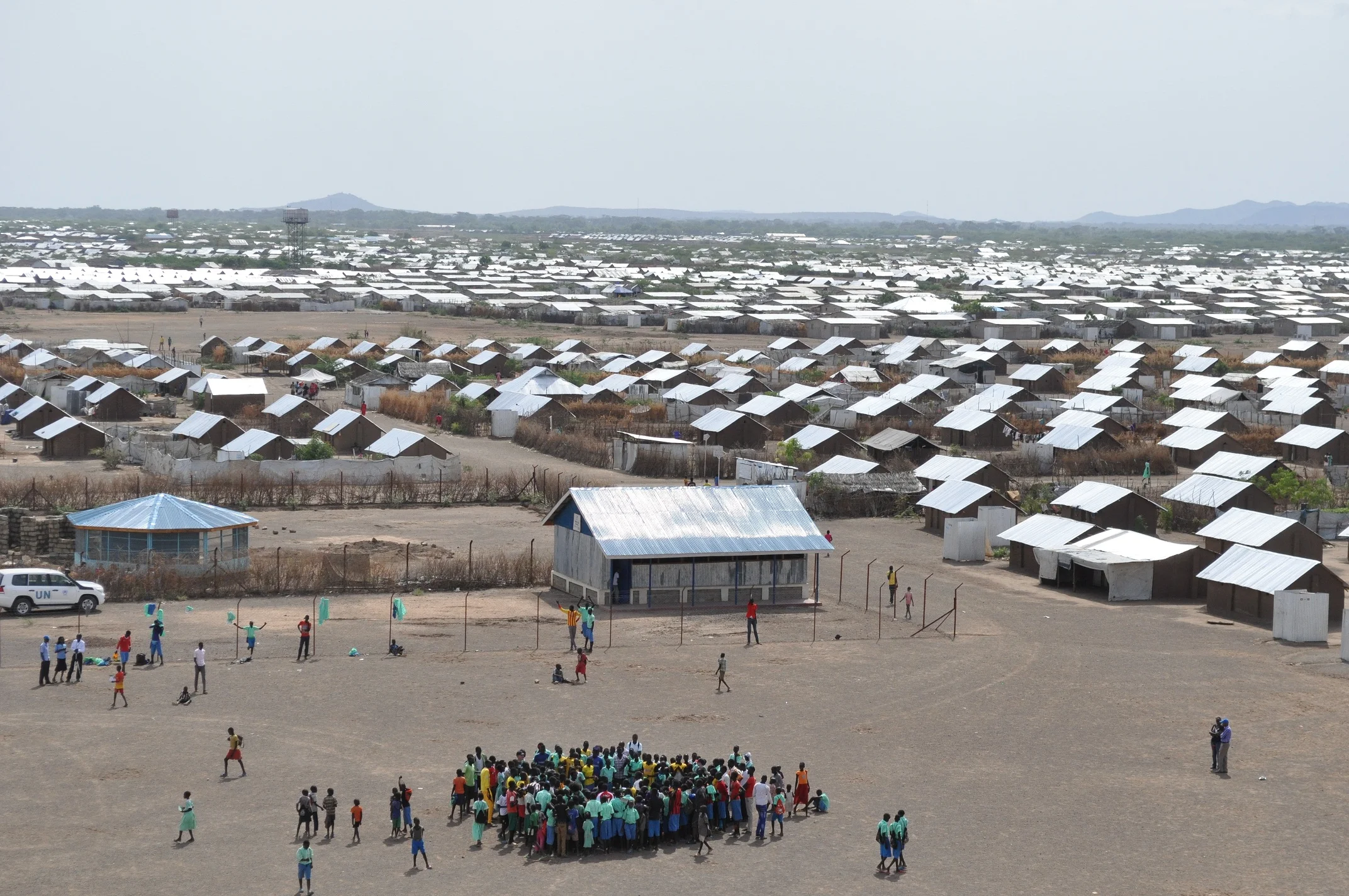Kakuma was created in 1992 when the Lost Boys from Sudan arrived in northern Kenya with nowhere to go.
C. Wachiaya/UNHCR
Today Kakuma swells with over 181,000 refugees
In the 1990s, Sudan’s civil war caused many adolescents to flee the country and seek asylum. These children, known as the Lost Boys of Sudan, first arrived in Ethiopia, where they established a children’s encampment with the help of aid organizations like the United Nations High Commissioner for Refugees (UNHCR). In 1991, this encampment was destroyed and many of the Sudanese had to return to Sudan or travel to Kenya.
In 1992, the UNHCR and the Kenyan government created Kakuma Refugee Camp. The camp was initially established to accommodate 23,000 Sudanese refugees. Nowadays, it accommodates refugees from countries all over sub-Saharan Africa, including Somalia, Ethiopia, and the Democratic Republic of the Congo.
This is Kakuma image: Jjumba Martin
war fuels regional refugee flight
Initially, many Sudanese were displaced by a civil war that lasted from 1983 to 2005. As their villages were destroyed, numerous Suda-nese people were forced to trek to Ethiopia, where they resided until their refugee camp was attacked. These Sudanese then crossed back into Sudan in order to get to Kakuma Refugee Camp in Kenya. Even after the civil war, the outpouring of refugees from South Sudan (independent since 2011) and Sudan continues, with many civilians fleeing a political power struggle and persecution based on ethnic grounds.
Many refugees also travel to Kakuma from Somalia. In the 1990s, after the collapse of Siyad Barre’s dictatorship in Somalia, civilians who had received weaponry from Barre began to fight back against militias. Many villagers fled Somalia in order to avoid getting caught in the crossfire.
Ethiopians make up a smaller portion of refugees residing in Kakuma.
Students at dusk, Morneau Shepell Secondary School for Girls, image Carol Devine
dusty hot kakuma, forgotten corner of world
"Weather in Kakuma is harsh. High temperatures are experienced throughout the year as it is a semi-arid area. Low rainfall is also experienced sometimes, especially in April and August. During the day the temperatures are also high, which affects the afternoon duties. At school it becomes so hard to concentrate in class because of the high temperature, and at night the temperatures are so low it is cold when we try to sleep.
There is occasional flooding of the eroded gullies, which sometimes sweeps away houses and also carries people and animals. The flooding is very destructive."
- Adut Dau and Fardosa Ali Hassan
BEING A REFUGEE
"Refugees are people like anybody in the world. They are people who flee their countries because of different reasons such as war, famine, and internal and external conflict, searching for resolutions in other countries or continents.
Life for a refugee girl is not good because she faces a lot of problems due to her state of being a refugee. Everyone takes advantage of refugee girls. A refugee girl passes through many challenges.
All in all, refugee girls are mistreated because of the status they possess. They can experience terrible things, like being raped and being beaten up ruthlessly simply because they are called refu- gees. It is very bad to be called refugee because people misinterpret it and it sounds terrible. The word refugee is very painful to us. We feel hopeless when we are called refugees because that is where the mistreatment comes from.
In conclusion, the world should not think that refugees are something strange. We are people like you, only we live in exile and lack freedom and we need more support for us to make a bright future. We all wish that one day we will not be refugees but citizens in our own homeland."
-Christine Bachoke and Amach Mabior



